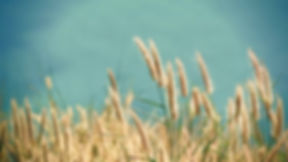
Tuesday, November 2, 2021
6:30 PM@St. Francis
THEME: Jesus said: I am the BREAD OF LIFE
EUCHARIST= Mass
Before the MASS:
Eucharist means THANKSGIVING
We offer our Thanksgiving or Gratitude to God for all His blessings each time we come to the Eucharist or Mass.
We show how much we LOVE God with all our heart when we quietly listen and learn all that He teaches us.
Read and ponder the prayer on page 1 before the Eucharist or MASS begins.
Remember in your heart how GRATEFUL you are to be a child of God and part of God’s FAMILY.
Notice and ponder:
The ALTAR or table where the bread and wine are consecrated.
The San Damiano cross of the RESURRECTED Christ
What Liturgical Color is the Priest wearing?_______
Follow the Order of the Mass p.3
Read p.6……Jesus loves us so much, he will always forgive us when we bring our SINS or wrong choices to him.
LISTEN carefully to God’s WORD. What special word or words do you hear?___________________________
PONDER and TRACE over the words of today’s Psalm:
The Lord is my Shepherd,
there is nothing I shall want
Ponder deeply: Jesus says: This is the WILL of my Father:
Everyone who believes in me as the Son of God will be part of my Heavenly Kingdom now and forever. John 6:37-40
Watch carefully as the Priest prepares the bread and the wine and look for: from p.11
Wine pitcher
Chalice
Priest’s Host
Ciborium (where the consecrated hosts are kept)
What did you learn by watching carefully?
Say the OUR FATHER p.17. Start Memorizing this for FIRST COMMUNION
Go up for a blessing and experience the power and love of God’s PRESENCE……Go back to your seat and sit in God’s loving Presence.
At the end of the Eucharist, the Priest sends us out to love and serve others.
What are you planning to share from this amazing experience with God?
Who will you share God’s love with this week?
ALL SOULS DAY:DIA de los Muertos

All Souls’ Day is celebrated on November 2. The Roman Catholic church sets aside All Souls’ Day to remember members of the faith who have died, especially those believed to be suffering in purgatory. Through prayers, masses, and almsgiving, the living pay tribute to the dead and hope to help them enter into heaven.
Many ceremonies honoring the dead have taken place throughout history, but it is believed that the abbot Odilo of Cluny, France, originated the annual November 2 commemoration near the end of the 10th century. The practice spread to most other countries by the end of the 13th century. All Saints’ Day, which honors saints and martyrs, had been celebrated on November 1 since at least the 9th century, so Odilo chose the following day to remember those whose souls need assistance in becoming worthy of heaven.
In 1915, Pope Benedict XV gave permission for priests to celebrate three masses on All Souls’ Day, making it the only other day besides Christmas with that distinction. Churches typically are decorated in black, the color most often associated with death. Parishioners commonly light candles in memory of loved ones and sometimes write the names of the departed in a special commemorative book.
Although it is no longer a common practice, it was once traditional for children in some European communities to go “souling” on the eve of All Souls’ Day, offering prayers for the dead in return for currant-filled buns called soulcakes. Some Italian households still mark the occasion by eating bean-shaped cakes called fave dei morti (beans of the dead), and children who have prayed for the dead leave their shoes outside to be filled with gifts.
November 2 is celebrated in Mexico and in some areas of the southwestern United States as Día de los Muertos, or the Day of the Dead. Popular belief holds that spirits are given permission to visit their earthly friends and relatives on this day. Cemeteries are crowded with people picnicking and adorning graves with marigolds, incense, and candles. Households set up festive altars welcoming the departed with foods such as tamales, chili sauces, and flan. People commonly make or buy pan de los muertos (bread of the dead), bread decorated with death symbols. Children enjoy chocolate and other sweets molded into shapes such as skulls and caskets.
READ and highlight what you might want to remember and share with others.





